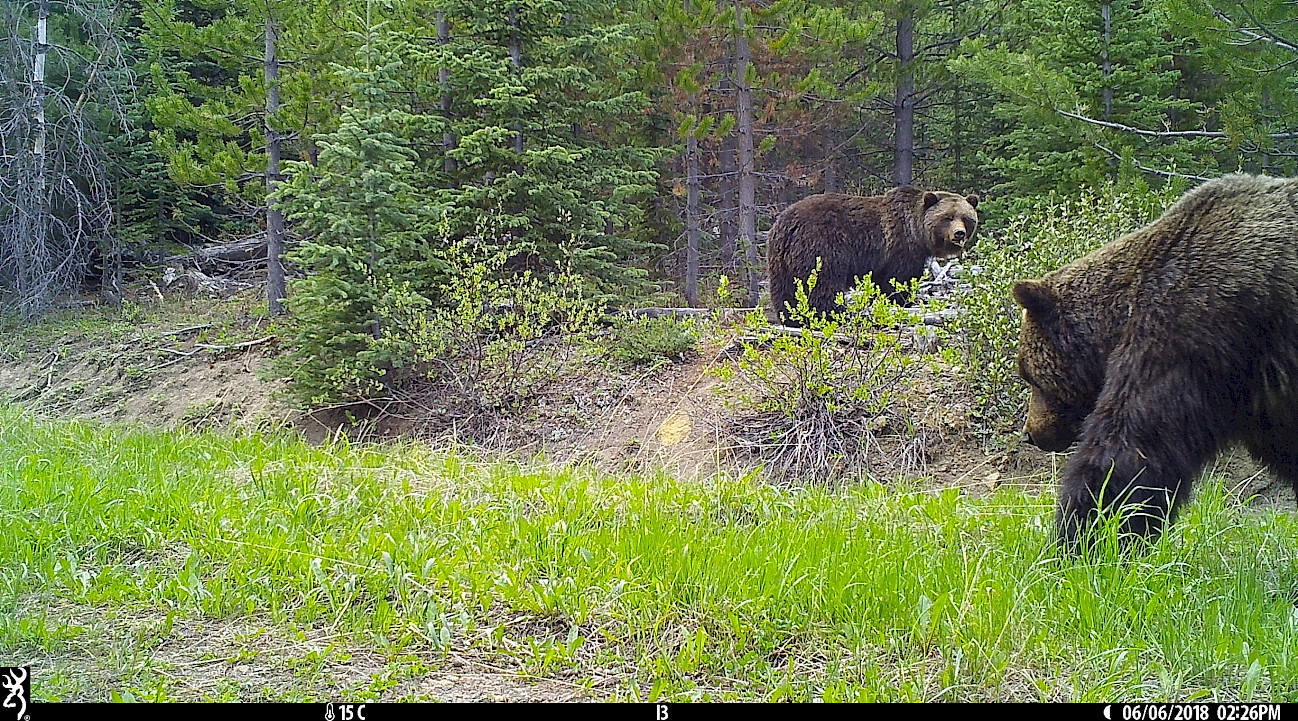On this page:
-
Guide to camera trap set up
-
Study design guidelines
-
Including the RCSC's Remote Camera Survey Guidelines v1 and Remote Camera Metadata Standards: Standards for Alberta v2
-
-
Data exploration and analysis
-
Classifying animals from camera trap images
Guide to camera trap set up
We have developed a guide highlighting some of the major considerations camera trap users should have in mind when deciding where and how to set up their camera traps. It is meant as a general guide for those who may have limited experience with formal sampling methods but are interested in having their camera trap photos used in research to support wildlife science and management.
WildCAM guide to camera trap set up (updated February 2021)
We also have streamlined the guide to camera trap set up into a short document, perfect for printing and tucking into your field notebook, for training field technicians and for quick reference when reminding oneself of protocol. There is a short reminder list as well as a synopsis of all features.
WildCAM condensed deployment protocol (streamlined March 2022)
To facilitate standardization of data collection in camera trap set up, we have also created WildCAM data collection sheets that can be used in the field during camera deployment and during camera visits or retrieval. Our datasheets are consistent with metadata standards developed by Wildlife Insights and the RISC Wildlife Camera Metadata standards. We encourage you to use them and hope they are useful for users when deploying, checking, and retrieving cameras in the field.
WildCAM datasheet for camera trap deployment (updated Februrary 2021)
WildCAM datasheet for camera trap visits or retrieval (updated May 2020)
We welcome feedback, so if there is anything that you think should be added to the above guide, or to the datasheets, please let us know. You can contact us at info@wildcams.ca, cole.burton@ubc.ca, or wildco.lab@gmail.com.
Study design guidelines
The Alberta Remote Camera Steering Committee (RCSC) has developed Remote Camera Survey Guidelines v1 (RCSC et al., 2023) and Remote Camera Metadata Standards: Standards for Alberta v2 (RCSC, 2023). These documents, including supporting materials, can be downloaded here.
- The purpose of the Remote Camera Survey Guidelines (RCSC et al., 2023) is to provide recommendations on study design and implementation (including equipment and deployment recommendations) for novice to advanced users of remote cameras in western Canada in a format aligned with standardized methods for metadata reporting. The intended audience for this document includes consultants, researchers, and wildlife biologists working for government, non-government agencies and industry.
- The purpose of the Alberta Remote Camera Metadata Standards (RCSC, 2023) is to provide guidance on the types of data that should be collected and documented when using remote cameras to detect wildlife, alongside the Wildlife Camera Metadata Protocol: Standards for Components of British Columbia’s Biodiversity No. 44 (RISC, 2019).
In addition, here is a recording of a webinar on "Remote Camera Survey Guidelines & Metadata Standards" (PDF of presentation slides here) presented by WildCAM member Cassie Stevenson on 25 April 2023. Please also refer to our Resource Library page for recommended resources.
Data exploration & analysis
WildCo postdoc Dr. Chris Beirne has created a great resource about how to create reproducible research with camera trap data. This document highlights some of the different analyses you can run with camera trap data and importantly, also links to some useful data exploration scripts in R.
The WildCo Lab also has a GitHub page with additional R scripts you can download and use to explore your own data, including for single and multi-site studies and using R to extract GIS data for your camera trap project.
Classifying animals from camera trap images
The WildCo Lab has prepared a guide highlighting some of the characteristics that you can use to tell species apart in camera trap images. We welcome your feedback! If you have any images that nicely show some of the characteristics mentioned in the guide, or if you have any tips for identifying species, please let us know (wildco.lab@gmail.com) so we can include it in this guide! (updated May 2021).
